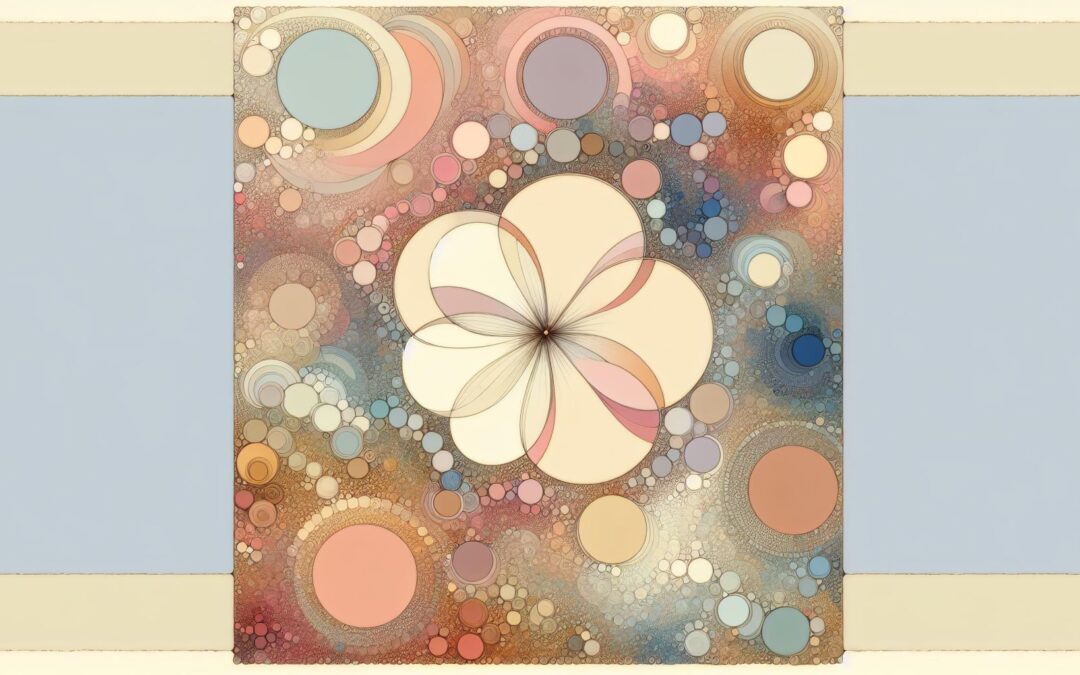Sweet poems have infused the language of affection, longing, and consolation across cultures and centuries. Their impact reaches well beyond simple delight, shaping the very ways poets portray connection: with others and within the self. Readers often discover fresh dimensions of tenderness, longing, and reflection through these lyrical works. The enduring influence is visible not only in romantic verse, but also in the emotional craft behind contemporary poetry collections. A striking example appears in the modern compendium Love Is Poetry: Rhyming Poems About Love Life by Danil Rudoy, which continues the lineage of sweetness and emotional depth.
Definition and History of Sweetness in Poetry and Sweet Poems
Sweetness in poetry means more than literal flavor or pleasure; it collects emotional currents from spoken endearments, musical phrasing, natural imagery, and cultural custom. While many traditions cultivate this quality, particular distinctions set apart sweet poems as an enduring genre that adapts to shifting eras. In comparisons of past and present, readers sense the evolving ways language, style, and cultural context affect tone and meaning. Studying the development of this motif reveals transformations from the personal addresses of ancient poets to the layered voices of today’s verse. For further context on poetic traditions, explore John Keats’ innovations.
Etymology and Meanings of “Sweet”
The English word “sweet” comes from Old English “swete,” Proto-Germanic “swotja,” and Latin “suavis,” all meaning pleasant taste but soon used more broadly. In poetry, the term denotes sensory pleasure, warmth, and the attraction of sound. Poetic sweetness, unlike in prose, highlights expressive music, vivid atmosphere, and gentle rhythm. The meaning shifts across time and context, sometimes pointing to emotional candor, smooth language, and intellectual pleasure. Common phrases invoke the delight of honey on the tongue and the comfort of a lullaby. Modern works, such as those mentioned in well-known compilations, find ways to reinvent or subvert these traditions.
Historical Pathways: From Sappho to Romanticism
Sappho and other ancient Greek lyricists wrote of sweetness in personal address. Her term “glukúpikron,” mixing sweet with bitter, influenced later poetry and introduced the link between sweetness and emotional complexity. Horace’s odes use “dulcia verba” literally and as a metaphor, treating language as a form of confection. Troubadours and trouvères emphasized sweetness in their songs, praising beloveds with the imagery of birdsong and blossoms. Medieval French and German lyrics articulated “douceur” and “süsser Klang” as expressions of desire using sound. Courtly lyrics found sweetness in tension and longing rather than innocence, mixing flattery with melancholy. A more extensive discussion of these early influences can be found at studies on Andrew Marvell.
Renaissance to Modern Shifts
Elizabethan poets treated sweetness as both a mark of refinement and a cause for critique. Sonnets depict sweetness as a form of exchange in love, but risk becoming cloying. During the Romantic period, poets championed natural sweetness: Keats composed lush odes to bees and blooms; Wordsworth evoked the “sweet inland murmur” of memory. Dickinson made “sweet” into a metaphysical symbol, aligning physical delight with spiritual joy in brief lines. Modernists view sweetness with irony: for example, Eliot’s “sweet Thames” suggests both memory and regret. In current poetry, sweetness can surface as an echo, a critique, or a vehicle for complex emotion, as seen in work by Adrienne Rich.
Cultural and Linguistic Dimensions
Sweetness takes different forms in various cultures. Persian ghazals call sweetness “sheerini,” linking it to amorous intensity. In classical Chinese, “tian” (sweet) also implies a clear mood: cherry blossoms, flowing water, and splendid scenes. West African praise songs convey sweetness through rhythm and communal participation. Urban ballads and indigenous oral poetry communicate sweetness by means of group rhythm and storytelling. These traditions show how context and audience shape sweetness as both a poetic tool and a cultural value, adding layers to its usage. For additional insights, refer to essays at Poetry Foundation on connotation.
Themes of Sweetness in Romantic and Sweet Poems
Sweet poems embrace diverse emotional currents, ranging from romantic allure to solace and playful intimacy. The most enduring themes manifest in ways that foster connection or reflection, blending gentle language, musicality, and carefully chosen imagery.
Love and Affection in Poetry
Romantic poetry uses sweetness to express intimacy, shaping language and rhythm into verbal touches and shared meanings. Verses of affection appear in collections for partners, where caresses, whispered words, and shared experiences shape a trusted world. In family poetry, sweetness appears in lullabies, affectionate terms, and cherished moments tied to childhood. Platonic tenderness can arise through elegies or poems about sincere friendship, marked by gentle directness and the soft lilt of trust.
Innocence, Nostalgia, and Pastoral Scenes
Sweetness in poems about youth often conjures innocence, as seen in sticky-fingered summers or remembered laughter. Nostalgic sweetness shades recollections of home and distant landscapes, making the ordinary seem special. Pastoral poetry uses sweetness to evoke lambs, brooks, lilies, and breezes, suggesting a longing for simplicity and lost ease. Beautiful examples are featured within Victorian era poetry.
Consolation, Lullaby, and Spiritual Sweetness
Gentle songs, soothing refrains, and regular rhythm all use sweetness to ease loss. Rilke describes this as “das Süße” (the sweet), where sweetness means comfort and healing rather than simple surface pleasure. Spiritual poems may contain prayers, blessings, and rituals, providing comfort through smooth sound and repetition. Contemporary poets revisit these themes in sentimental collections designed to comfort readers.
Irony, Bittersweetness, and Satire
In ironic poetry, sweetness is often used deceptively. Bittersweetness shows mixed feelings, combining pleasure with sorrow. Poets may highlight overly sweet moments to critique sentimentality or to reveal darker truths behind charming appearances. When unchecked, sweetness becomes excessive or artificial. Modern poetry explores the limits of sweetness, seeking to unsettle as much as soothe. For examples where sweetness moves between irony and sincerity, explore poems by Pablo Neruda.
Language and Style Devices in Sweet Poems
The language of sweet poems features distinctive stylistic devices that shape the emotional and sensory impact of the verse. Sound, word choice, structure, and imagery all contribute to experiences of delight, longing, or reflection.
Diction, Diminutives, and Endearments
Poems about sweetness focus on pleasing sounds, with poets choosing smooth words, soft syllables, and pleasant sounds. Diminutives such as “little bird,” “darling,” or “sweetheart” infuse poems with affection, while endearments establish closeness and warmth. For related explorations, review short girlfriend poems.
Imagery: Nature, Food, and Music
Honey, blossoms, fruit, gentle music, and soft light fill the pages of sweet poems, creating a sensory landscape of abundance. Light may appear golden or gentle, highlighting moments of joy or serenity. These images evoke pleasant tastes, scents, and scenes that amplify the poem’s emotional core. A selection of this approach surfaces within poems for loved ones.
Sound Patterns: Euphony, Alliteration, and Rhyme
Euphony, alliteration, assonance, and rhyme all contribute to sweetness in sound, soothing readers as they progress through the lines. Alliteration might appear in phrases such as “silver streams sing,” while assonance links words through vowel repetition. Both perfect and slant rhyme create pleasing echoes, connecting lines and ideas musically. This topic is further discussed on The Poetry Archive.
Syntax, Rhythm, and Repetition
Sweetness thrives when lines are brief, with repetition and rhythmic stability recalling mantras and lullabies. Pauses, known as caesuras, provide breathing space, inviting the reader to absorb the gentle tone. Carefully controlled rhythm reinforces the trustworthiness and intimacy of the poem’s voice. In thoughtfully arranged verses, sweetness becomes a pulse that guides emotional response. For more examples utilizing rhythm to shape emotion, visit noteworthy short poems.
Metaphor, Simile, and Synesthesia
Metaphors transform lips into cherries, affection into honey, and hope into sunlight within the realm of sweet poems. Similes create unexpected links, as in “her laughter, sweet as ripening pears.” Synesthesia adds further layers where lines might merge color with taste or blend sound with a sense of touch, enhancing emotional abundance. These figurative devices form a rich texture, making the world of the poem vivid and absorbing, as can be seen in celebrated classic love poems.

